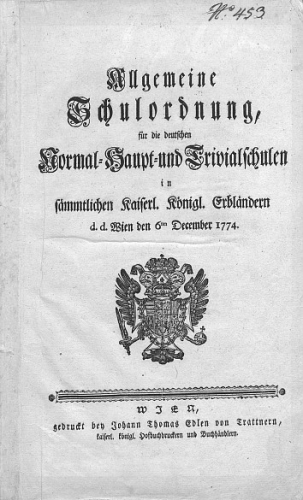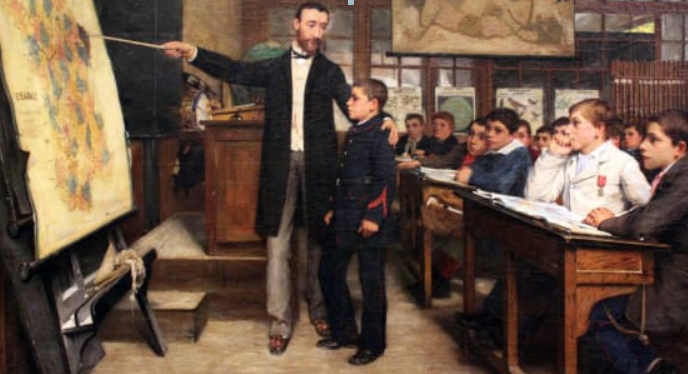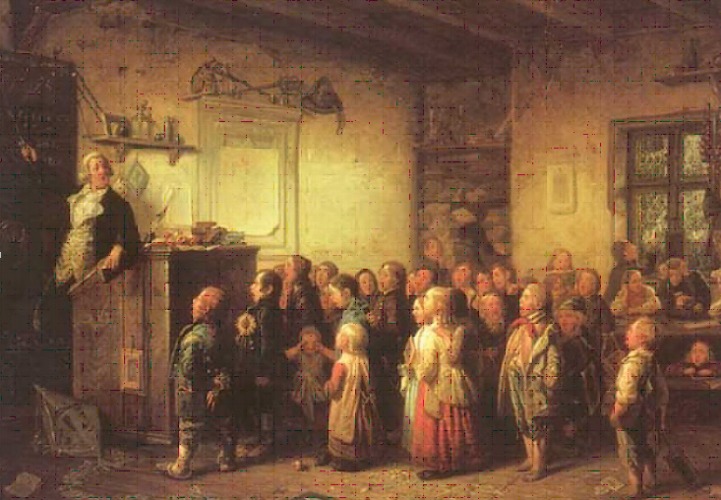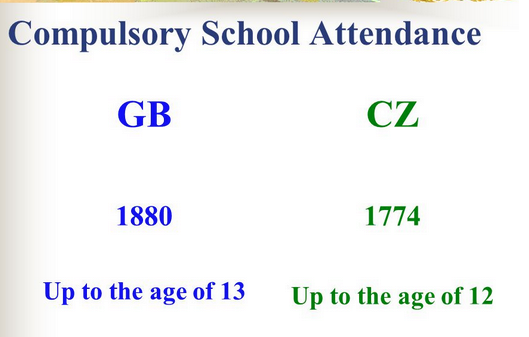
Maria Theresia introduced compulsory school attendance 250 years ago

In 1774, Maria Theresa had already ruled her empire for 34 years. The great wars she waged were fought long ago. The empress therefore proceeded with reforms corresponding to the spirit of the incipient Enlightement.
Universal compulsory schooling was introduced by Maria Theresa on December 6, 1774.

The education reform under Maria Theresa had a very significant impact on the further development of the society at that time (including the current one) and to a certain extent we are based on its foundations to this day.
The implementation of the school reform, formulated by the General School Regulations of 6 December 1774, signaled the state's interest in the education of the entire population for the first time in history. Basically, it responded to the economic necessity and necessity brought about by the gradual deviation from the feudal organization of production and its transfer to the form of factories.
As early as 1778, for example, the provincial government issued a decree that no master was allowed to accept a boy into his apprenticeship who had not proven that he had "successfully completed regular classes." It was particularly significant that the school reform itself was simultaneously linked to a number of supporting steps. As early as 1775, a c. k. school book warehouse was established in Prague, which was entrusted with publishing textbooks.
The basis of Theresian's school reform was the construction of schools in all parish communities. In smaller towns and all villages with a parish, one- or two-class trivial schools were to be established (according to the three basic subjects - the so-called trivia: reading, writing and arithmetic, which were to be supplemented with religion and, in the countryside, the basics of farming, and in the cities, with skills needed for industry and crats.

A significant innovation of the General School Regulations was that the established schools were to provide education not only to boys but also to girls. However, girls were practically not admitted to schools until 1780. It was only in this year that the first girls' classes were established in some towns. They gradually expanded and over time, joint education of boys and girls became common in many places.
Attendance allowed parents with adequate financial means to support their own home tutor, all other children had to complete at least six years of schooling from the age of six.
Maria Theresa's father, Emperor Charles VI, was already aware of the need of educational reform, and in 1735 he therefore set minimum requirements for teacher education and at the same time published the first ideas about the curriculum - but because the schools were administered by the church, and mostly through the conservative Jesuit order, the state had practically no control over teaching and in practice it remained a mere proclamation. The abolition of the Jesuit order in 1773 was a decisive factor in the Viennese court's efforts to bring about fundamental changes in education, in two respects: firstly, the system of Jesuit schools automatically disintegrated, and secondly, all the property of the order, including school buildings, fell to the state.

The language of instruction in elementary schools always corresponded to the ethnic composition of the local population, so that in Bohemia and Moravia, with the exception of the Sudetenland, instruction was overwhelmingly in Czech. The German syllabary created as part of the preparatory work in 1774 was thus supplemented with Czech the following year.
The opening passage of the patent is of particular note, which reads: "The education of youth of both sexes, as the most important foundation of the true happiness of nations, requires careful consideration; this topic attracts all the more attention, the more surely the entire future way of life of all people, the formation of the spirit and way of thinking of entire nations, depends on good education and guidance in the early years, which can never be achieved unless the darkness of ignorance is removed by means of well-conceived educational and training institutions and everyone receives adequate instruction."
Thanks for reading
Margaret
